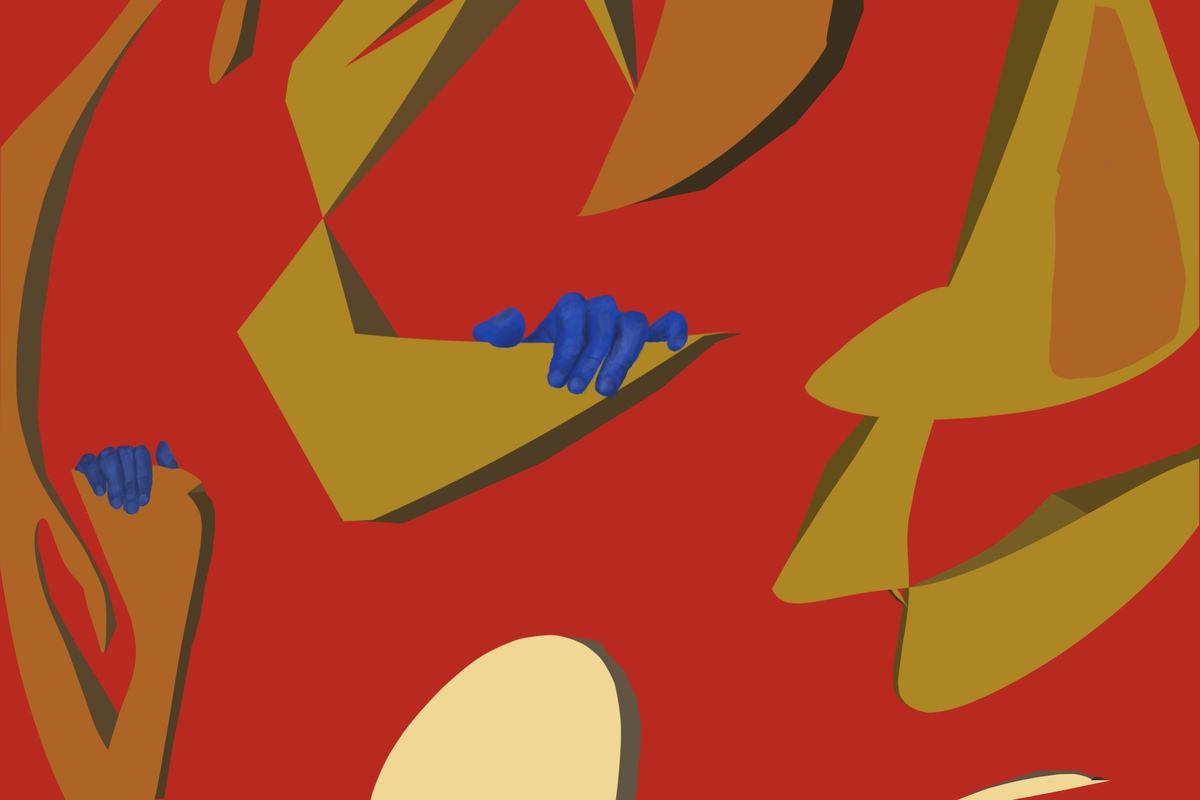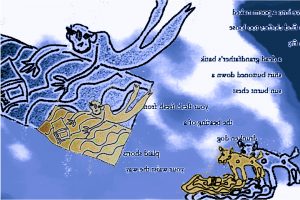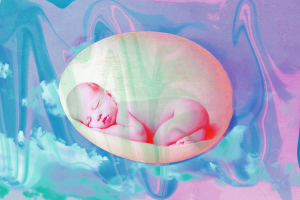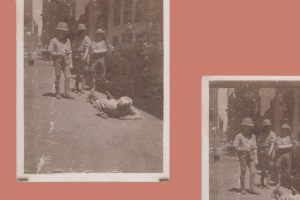
LOOKING BEYOND BORDERS WITH ARMS OUTSTRETCHED
by Jessica Moore | May 27, 2022
By virtue of its own hybridity as a manifesto, invitation, and poem, Gloria Anzaldúa’s Borderlands/La Frontera reimagines political borders; it observes their artificiality and porousness. Written in Spanish and English, Borderlands is perceptive and analytical; deconstructive and didactic. Anzaldúa’s theory, or, perhaps more suitably her call to action, is focused on the concept of a new mestiza: “a consciousness of the Borderlands”.
Inside my skull something shifts. I “see” my face. Gloria, the everyday face; Prieta and Prietita, my childhood faces; Gaudi, the face my mother and sister and brothers know. And there in the black, obsidian mirror of the Nahuas is yet another face, a stranger’s face.
For Anzaldúa, identities develop on either side of borders and collide at the borderline, jolting an otherwise dormant consciousness awake. Though she specifies in the preface of her text that the physical border to which she refers is the US/Mexico border, she acknowledges that sexual, psychological, sociological borders are global phenomena; they occur wherever two terrains touch, where the “space between individuals shrinks with intimacy”. These immaterial borders are visible via her text’s bilingualism — a literary decision that enables Anzaldúa to demonstrate her own plurality and to voice the “testimony and experience” of other nahual/shape-shifting personas. Languages die and are reborn, she says. Indeed, through her text’s linguistic hybridity, Anzaldúa responds particularly, although not exclusively, to the precarity felt by (especially queer) Chicana women: she proposes a methodology for nurturing la mestiza, that is, to embrace the borderline’s malleability.
As her text segues between Spanish and English, Anzaldúa illustrates the possibilities of bilingual literature and considers the consciousness that emerges from a multitudinous identity. Anzaldúa includes the Nahuatl term nepantla, meaning torn between ways, to describe the interactivity and lassitude of embodying two identities. While Borderlands appears inaccessible for exclusively Spanish or English speakers — Anzaldúa’s alternations between the two languages are abrupt and challenging — it is precisely this discord that exposes literature’s faculty to liberate dual identity. Her genre-defying prose/poetry, a blend of forms itself, fashions as its own imaginative manifestation of the borderlands. Rejecting neither facet of her plurality in her writing, and thus imparting her identity through language, Anzaldúa transcends the material borderline, one that is “not comfortable, but home.”
This is her home, this thin edge of barbwire.
In The Sociology of Space, Georg Simmel defines a boundary as a “sociological fact that forms itself spatially,” a physical manifestation of the political. Anzaldúa’s linguistic ambidexterity speaks to this idea; in Borderlands, she writes extensively on the cultural boundary that separates Mexico and the US, and the physical border itself, as an altar of conflict and volatility. Rather than fixing her identity upon such an unstable object, Anzaldúa frees her identity by illuminating the border’s instability. She recognises that to move towards a new consciousness, one must overcome the border as a vessel of permanence. One must navigate a “state of perpetual transition” and relish the act of oscillation.
Anzaldúa’s text proposes oscillation as a counter to not only the exclusionary strictures of the Mexico/US border, but also as a response to the Chicano Movement. The Chicano Movement sought to deconstruct any sense of unified, assimilated Mexican-American identity in favour of indigenous pride and a Black-Brown alliance. This, however, as echoed in Anzaldúa’s work, appeared to ignore Chicana and queer identities; the centring on masculine empowerment, and the eventual fruition of violent modes of activism, came to function as its own apparatus of marginalisation. Rather than align her philosophy with the deconstruction of unified identities as proposed by the Chicano Movement, Anzaldúa calls for a hyper-inclusionary consciousness, one that accounts for queer and indigenous individuals, those who are often elided from (white) homosexual and (male) racial liberation, respectively. She believes that to nurture identity for what it is, multiple and unfixed, one must chart new territories of cultural consciousness, a new mestiza. In Borderlands, she materialises a space for such fluidity.
I, a mestiza, continually walk out of one culture and into another, I am in all cultures at the same time… Estoy norteada por todas las voces que me hablan
If the English language is hegemonic and by implication masculine, it is not without significance that Anzaldúa incorporates Spanish in her feminist philosophy. Though she realises that to reach the widest audience she must write predominantly in English, she chooses to eclipse the dominant tongue and thereby reject masculine Anglophonic identity. In this radical subversion, Anzaldúa is norteada por todas las voces que me hablan/“pointed northward by voices that speak to me”. She is directed toward a new, decidedly collective consciousness, one better aligned with her own experience as a woman ‘in-between’, resistant to the finitude of categories. She yields to a consciousness that is permeable, untethered, subject to metamorphosis. On gender identity and its place in literature, Helene Cixous writes that “Woman must put herself into the text — as into the world and into history — by her own movement”. For Anzaldúa at least, this certainly holds true.
For Anzaldúa, la mestiza must accept ambivalence and contradiction. Immobility is not an option. One must continue to move, to “leap in the dark”. The Chicana woman, especially the queer Chicana woman, must go toward another space; she must realize her indeterminate status as a site of possibility; to see herself tenderly incarnated in other nahual identities. She must author a new language, a new story.
My ‘stories’ are acts encapsulated in time, ‘enacted’ every time they are spoken aloud or read silently.
Other than la virgen de Guadalupe, whose cultural image Anzaldúa explores in detail, a figure that embodies the permeable identity delineated by Anzaldúa is Coatlicue (Serpent Skirt), the Nahuatl goddess of Earth. Serpentine, headless, adorned in skulls and human hands; Coatlicue is a hybrid figure, a corporeal image of the grotesque and the earthly in simultaneity. Anzaldúa describes encountering Coatlicue at the Museum of Natural History in New York City: “Coatlicue depicts the contradictory. In her figure, all the symbols important to the religion and philosophy of the Aztecs are integrated. Like Medusa, the Gorgon, she is a symbol of the fusion of opposites: the eagle and the serpent, heaven and the underworld, life and death, mobility and immobility, beauty and horror.” Ambivalence immortalised in andesite. For Anzaldúa, this ambivalence should be embraced.
As both autobiographical essay and poem, Borderlands is reflexive of its own hyphenation. Anzaldúa’s philosophy is etched onto the pages, for “the struggle has always been inner, and is played out in the outer terrain,” the latter being the page itself. Speaking “half and half” is intuitive for Anzaldúa, but it is also radical, literal and political. Carving out a space of her own, Anzaldúa navigates the borderline as both body and voice; she looks beyond borders with arms outstretched. ∎
Gloria Anzaldúa, from Borderlands/La Frontera: The New Mestiza (San Francisco: Spinster/Aunt Lute Press, 1987)
Georg Simmel, “The Sociology of Space”, trans. Mark Ritter & David Frisby. In Simmel on Culture: Selected Writings, ed. by David Frisby and Mike Featherstone (London: Sage, 1997)
Hélène Cixous, et al. “The Laugh of the Medusa.” Signs, vol. 1, no. 4, 1976, pp. 875–893.
Words by Jessica Moore. Art by Hannah Gardner.




